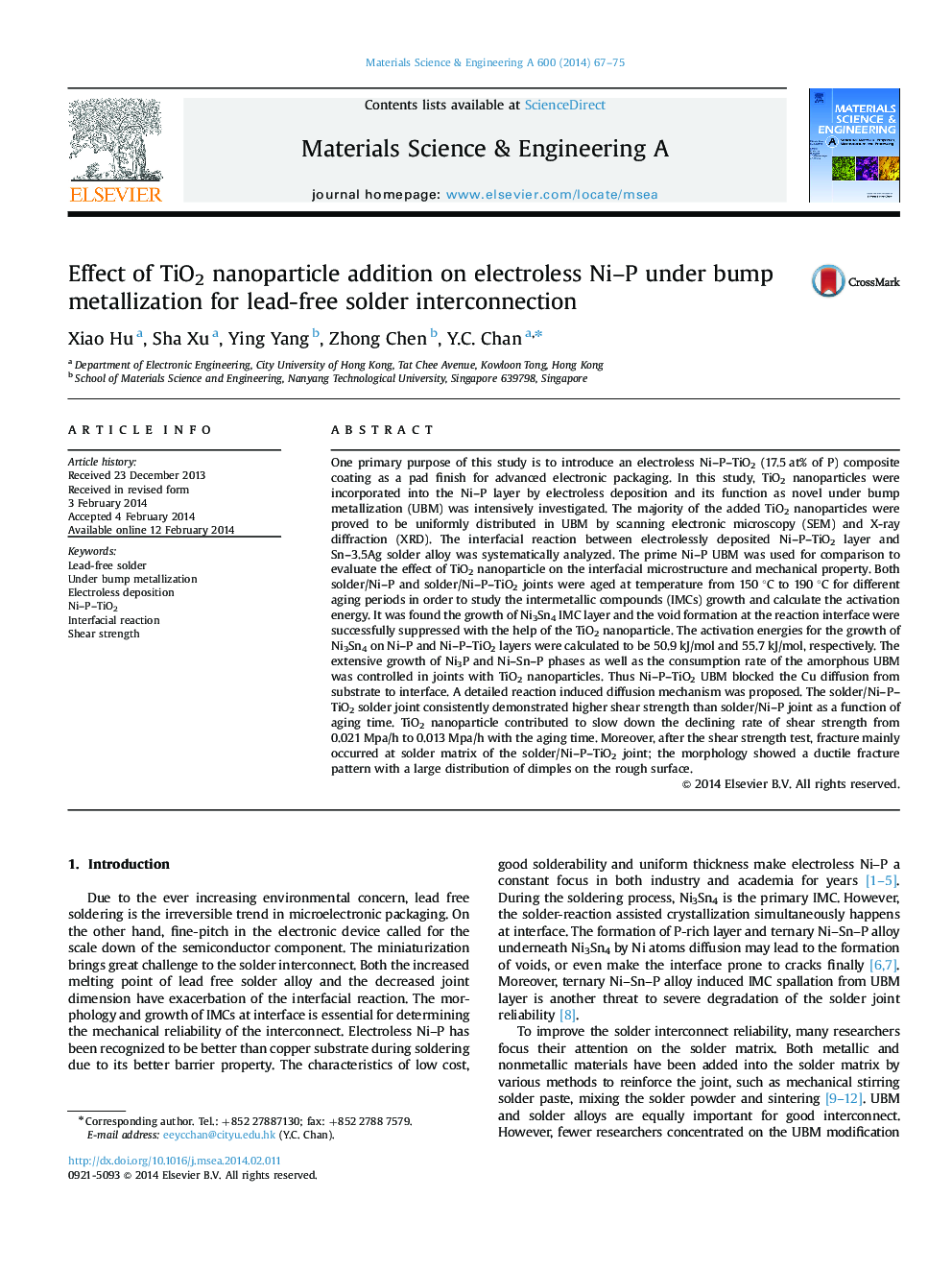| کد مقاله | کد نشریه | سال انتشار | مقاله انگلیسی | نسخه تمام متن |
|---|---|---|---|---|
| 7981093 | 1514743 | 2014 | 9 صفحه PDF | دانلود رایگان |
عنوان انگلیسی مقاله ISI
Effect of TiO2 nanoparticle addition on electroless Ni-P under bump metallization for lead-free solder interconnection
دانلود مقاله + سفارش ترجمه
دانلود مقاله ISI انگلیسی
رایگان برای ایرانیان
کلمات کلیدی
موضوعات مرتبط
مهندسی و علوم پایه
مهندسی مواد
دانش مواد (عمومی)
پیش نمایش صفحه اول مقاله

چکیده انگلیسی
One primary purpose of this study is to introduce an electroless Ni-P-TiO2 (17.5 at% of P) composite coating as a pad finish for advanced electronic packaging. In this study, TiO2 nanoparticles were incorporated into the Ni-P layer by electroless deposition and its function as novel under bump metallization (UBM) was intensively investigated. The majority of the added TiO2 nanoparticles were proved to be uniformly distributed in UBM by scanning electronic microscopy (SEM) and X-ray diffraction (XRD). The interfacial reaction between electrolessly deposited Ni-P-TiO2 layer and Sn-3.5Ag solder alloy was systematically analyzed. The prime Ni-P UBM was used for comparison to evaluate the effect of TiO2 nanoparticle on the interfacial microstructure and mechanical property. Both solder/Ni-P and solder/Ni-P-TiO2 joints were aged at temperature from 150 °C to 190 °C for different aging periods in order to study the intermetallic compounds (IMCs) growth and calculate the activation energy. It was found the growth of Ni3Sn4 IMC layer and the void formation at the reaction interface were successfully suppressed with the help of the TiO2 nanoparticle. The activation energies for the growth of Ni3Sn4 on Ni-P and Ni-P-TiO2 layers were calculated to be 50.9 kJ/mol and 55.7 kJ/mol, respectively. The extensive growth of Ni3P and Ni-Sn-P phases as well as the consumption rate of the amorphous UBM was controlled in joints with TiO2 nanoparticles. Thus Ni-P-TiO2 UBM blocked the Cu diffusion from substrate to interface. A detailed reaction induced diffusion mechanism was proposed. The solder/Ni-P-TiO2 solder joint consistently demonstrated higher shear strength than solder/Ni-P joint as a function of aging time. TiO2 nanoparticle contributed to slow down the declining rate of shear strength from 0.021 Mpa/h to 0.013 Mpa/h with the aging time. Moreover, after the shear strength test, fracture mainly occurred at solder matrix of the solder/Ni-P-TiO2 joint; the morphology showed a ductile fracture pattern with a large distribution of dimples on the rough surface.
ناشر
Database: Elsevier - ScienceDirect (ساینس دایرکت)
Journal: Materials Science and Engineering: A - Volume 600, 10 April 2014, Pages 67-75
Journal: Materials Science and Engineering: A - Volume 600, 10 April 2014, Pages 67-75
نویسندگان
Xiao Hu, Sha Xu, Ying Yang, Zhong Chen, Y.C. Chan,